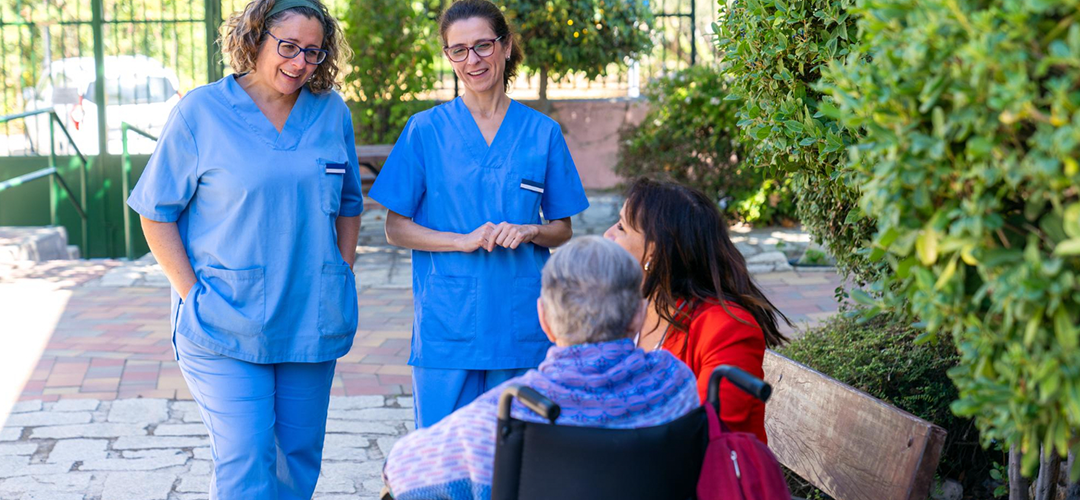© 2025 RIOMED LTD. ALL RIGHTS RESERVED | WWW.RIOMED.COM
ISO 9001 | ISO 14001 | ISO 27001 | Cyber Essentials

Help Others Discover – Click to Share!
As of October 2023, there were an astounding 7.7 million people waiting for NHS treatment in England. With the introduction of integrated care systems (ICSs) and improved digital solutions, that number dropped to 7.6 million by February 2024. However, the end of long waits for treatment is nowhere in sight. In January 2025 alone, over 221,000 patients waited over 4 hours for emergency admission after the decision to admit. Over 129,000 patients waited for over 12 hours from their arrival to their admission in A&E (an all-time high). This is a clear signal that there are significant bottlenecks in care pathways, and an urgent need, across all health providers, to achieve a sense of urgency in the emergency care system.
These are not mere numbers, they are accounts of delayed care, system overwhelm and disparate services. The challenge is sometimes not the lack of care, but the lack of connection. In response, the NHS introduced the ‘Fit for the Future’ 10-Year Plan, focusing on prevention, people-centred care, digital transformation, and, above all, integration.
This is where Cellma, our NHS-aligned Electronic Health Record (EHR) and care coordination platform, plays a transformational role in enabling true Integrated Care Delivery.
Between December 2021 and November 2023, the NHS completed over 6.15 million patient pathways across hospital and community settings, a 46.8% increase. But managing millions of patients through fractured systems is unsustainable. Integrated care means building connected pathways, where a patient’s journey is supported from GP to discharge, home care to rehabilitation, without gaps, repetition, or loss of information.
Integrated Care Systems and neighbourhood-based models demand not just clinical excellence, but digital architecture that supports collaboration across providers. Cellma, a modern age EHR, makes that vision a reality, every day, across the UK and internationally.
Understanding How Cellma Supports Integrated Care at Every Step
From entry to the system, to discharge, to follow-up, Cellma supports the full integrated care flow, bringing primary care, secondary services, mental health, community teams, and social care services on one digital platform.
This is how:
Entry & Risk Stratification
Patients who enter care are typically via the GP, A&E, 111, or community referrals.
With Cellma the entry to care is documented immediately, and risk stratified using the tools that can be configured to reflect the identification of frailty, long-term conditions (LTCs), or complex social needs, which is the pursuit of the patient. Care coordination starts early, with automated alerts and team assignment.
Holistic Assessment Across Care Domains
Cellma captures not just medical data, but also:
By bringing all of this into one shared EHR, Cellma ensures every stakeholder sees the full picture, not just their slice of it.
Shared, Patient-Centred Care Planning
With Cellma, care plans are:
Care plans are stored directly within the EPR and accessible across ICSs — reducing duplication and enabling real-time updates.
Collaborative Delivery Across All Aspects of Care
Cellma allows all care professionals across settings to:
Continuous Monitoring, Feedback and Adjustment
Cellma enables:
Cellma is a living system, not a static record.
Crisis Support & Escalation Without Fragmentation
Cellma helps de-escalate pressures on A&E by facilitating:
If hospital admission is necessary, Cellma ensures every care provider has access to the full patient record so that potential unsafe duplications and wasting time in critical moments, are avoided.
Integrated Discharge & Reablement
Discharge planning begins at admission. Cellma enables Integrated Care Systems (ICSs) to:
End-of-Life & Long-Term Care
Cellma supports:
This ensures dignified, person-centred care until the very end.
Cellma doesn’t just digitise records, it digitises collaboration. It supports over 30 medical specialties, communicates via NHS-standard protocols (FHIR, HL7), and integrates effortlessly with existing systems. It’s:
Cellma can integrate all the various fragmented systems into a single, unified digital platform. Cellma becomes a Single Source of Truth, removing data silos, reducing mistakes, and informing more rapid, more confident clinical decision making.
The NHS envisions a future of digitally enabled neighbourhood care where prevention, personalisation, and integration are the norm. But that future isn’t distant. It’s happening now in ICSs, Trusts, and community teams already using Cellma to coordinate care.
Ready to support true Integrated Care Delivery?
Recent Blogs
Let’s transform healthcare together. Speak with RioMed for a tailored solution.
Cellma supports integrated care by linking hospitals, primary care, community services, mental health, and social care teams into a single solution. Cellma is built to incorporate shared electronic records, multidisciplinary care planning, real-time data sharing, and automated coordination tools within the standards of NHS interoperable. This means patients can experience continuity of care and duplication is reduced for ICS partners.
Yes. Cellma is modular and highly configurable, so ICSs, Trusts, and Providers of community care can build workflows based on local care delivery models. It could be Discharge to Assess (D2A), a virtual ward, or a holistic community-based care. Cellma is designed to support your operational and clinical requirements and still be compliant with national requirements.
Unlike some traditional EHRs that focus on siloed clinical records, Cellma is designed for complete care coordination. It includes not just clinical documentation but also care navigation, risk stratification, MDT collaboration, social care integration, patient-reported outcomes, and population health analytics, making it a true enabler of integrated, person-centred care.
Get a personalised walkthrough of Cellma’s powerful features. See how it simplifies workflows, enhances patient care, and supports data-driven decisions.
Never Miss an Important Update!
Enter your email address to receive periodic updates about RioMed’s events and initiatives.


© 2025 RIOMED LTD. ALL RIGHTS RESERVED | WWW.RIOMED.COM
ISO 9001 | ISO 14001 | ISO 27001 | Cyber Essentials